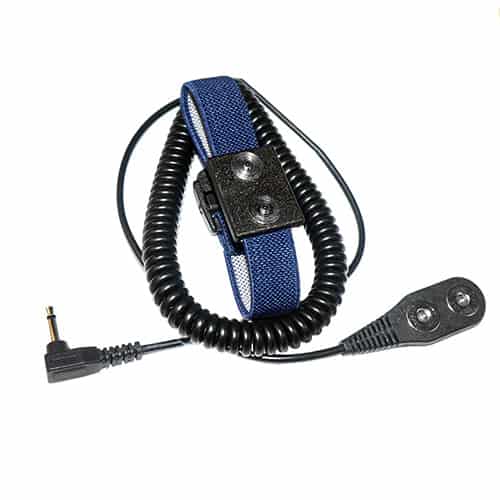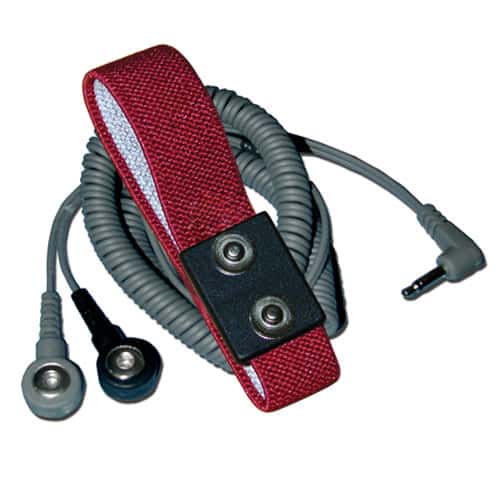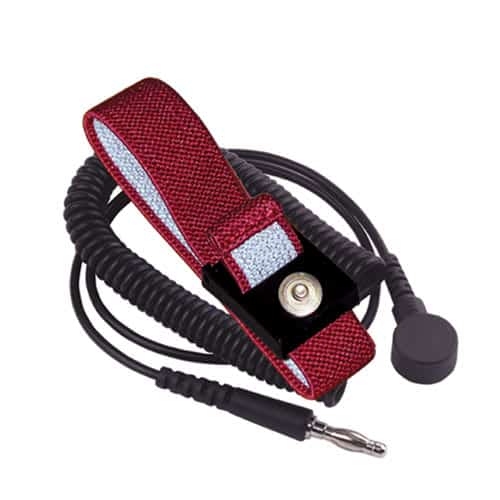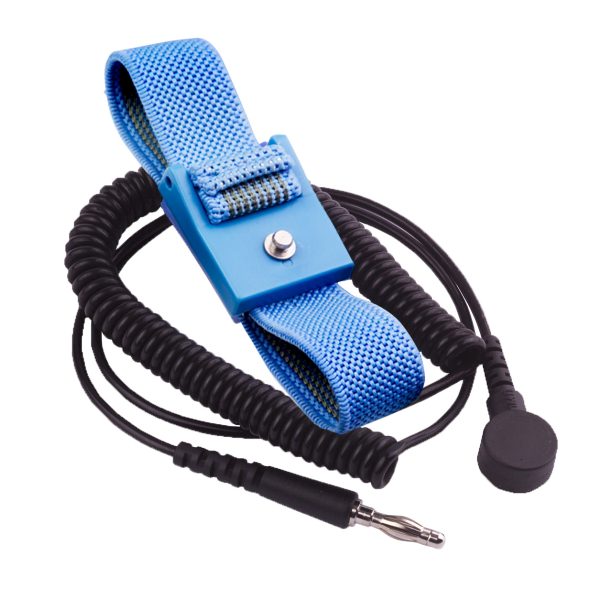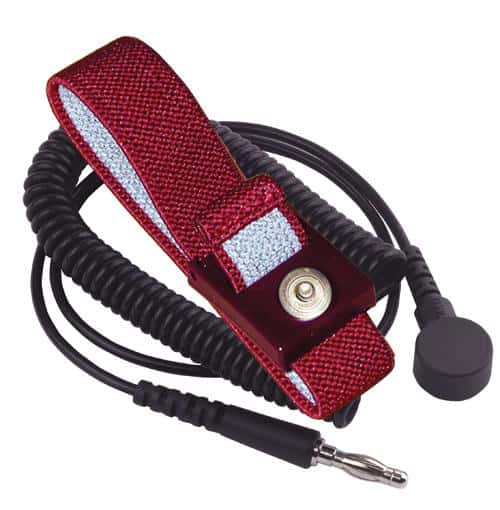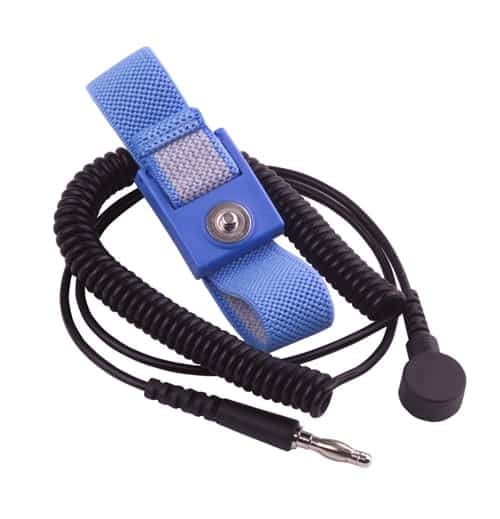Free Shipping on Most Simco-Ion Products!

| PVC-300 Static Dissipative Plastic |
| Description PVC-300 is a plastic sheet product designed to control static electricity for a wide range of end uses. It is a high quality polyvinyl chloride sheet which has been surfaced with SciCron Technologies proprietary, clear, C-300 static dissipative surfacing. This unique technology prevents charge generation on the sheet surfaces, thereby controlling particulate attraction and preventing electrostatic discharge (ESD) events. This performance is permanent and totally independent of humidity. PVC-300 offers exceptional design versatility since it fabricates simply, is light in weight and is available in large sheet sizes. It also exhibits excellent chemical resistance, surface hardness, and mar resistance, plus superior flame spread properties. Applications Fabrication |
Features and Benefits Cannot be tribocharged when properly grounded – Prevents build-up of static charge and accumulation of harmful contamination. Electrostatic decay in less than 0.05 second per Federal Test Standard 101C, Method 4046.1 – Results in rapid static dissipation without arcing.Surface resistivity of 106 – 108 ohms per square – Provides for ESD control.Permanence in static dissipation performance – Avoids cost of application of temporary topical anti-stats. Humidity independent static charge control – Avoids inconvenience of maintaining high levels of humidity and damage caused by such humidity. Advanced technology, uniform surface treatment – Avoids conductive discontinuities (charged “hot spots”) often found with non-uniform temporary topical anti-stats. Superior flame spread properties – Provides additional protection for equipment in a fire. Hard, mar resistant, durable surface – C-300 surface, harder than the base plastic, reduces risk of damage to the sheet surfaces. Superior chemical resistance – Reduces risk of solvent or chemical surface damage. Availability Standard Dimensions (Nominal) Standard Sheet Size: 46″ x 94″ Thickness: 3mm (1/8″), Other sizes and thicknesses available upon request. Made in USA Questions? Ready to order? E-mail us or call C.C. Steven at 805-658-0207. |
| PVC-300 Typical Physical Properties (Typical but not guaranteed values for 0.25 inch material) |
| property | test method | units | PVC-300 |
| PHYSICAL |
| Specific Gravity | ASTM D-792 | — | 1.38 |
| Pencil Hardness | ASTM D-3363 | Hardness Scale | H |
| MECHANICAL |
| Tensile Strength–Ultimate | ASTM D-638 | psi | 10,000 |
| Tensile Strength–Elongation | ASTM D-638 | % | 40 |
| Tensile Modulus | ASTM D-638 | psi | 425,000 |
| Flexural Strength | ASTM D-790 | psi | 14,500 |
| Flexural Modulus | ASTM D-790 | psi | 425,000 |
| Compressive Strength | ASTM D-695 | psi | 12,000 |
| Izod Impact Strength (milled notch) | ASTM D-256 | ft-lb/inch of notch | 0.5 |
| THERMAL |
| Deflection Temperature (264 psi load) | ASTM D-648 | oF | 140 |
| Vicat Softening Point | ASTM D-1525 | oF | 150 |
| Maximum Continuous Service Temperature | — | oF | 130 |
| Coefficient of Thermal Expansion | ASTM D-696 | in/in/oF | 7.0 x 10-5 |
| Coefficient of Thermal Conductivity | Cenco-Fitch | BTU*in/hr*ft2*oF | 1.1 |
| FLAMMABILITY |
| Horizontal Burn (Flame Spread) | ASTM D-635 | inch | Less than 1.0 |
| UL 94 Rating | UL 94 | UL Classification | V-O |
| OPTICAL |
| 3mm Transparent Clear Transmittance–Total | ASTM D-1003 | % | 70 |
| Haze | ASTM D-1003 | % | 6.0 |
| ELECTRICAL |
| Surface Resistivity | ASTM D-257 | ohms/sq | 106-108 |
| Surface Resistance | EOS/ESD S11.11 | ohms | 105-107 |
| Electrostatic Decay | FTS 101C Method 4046.1* | sec | Less than 0.05 |
| * Federal Test Standard 101C, Method 4046.1 as described in EIA-541, Appendix F, Measurement of Electrostatic Decay Properties of Dissipative Planar Materials | |||
| Chemical Resistance ASTM D-543 Samples immersed in the specified chemicals for 24 hours at room temperature and then visually examined |
| Chemical | Surface Attack | Visual Evaluation |
| Deionized Water | None | Clear |
| 30% Sodium Hydroxide | None | Clear |
| 30% Sulfuric Acid | None | Clear |
| 30% Nitric Acid | Slight pitting | Clear |
| 48% Hydrofluoric Acid | None | Clear |
| Methanol | Slight pitting | Clear |
| Ethanol | None | Clear |
| Isopropyl Alcohol | None | Clear |
| Acetone | Severe pitting | Plastic attacked |
| Methylene Chloride | Sample dissolved | Sample dissolved |
| Light Transmission Spectral Analysis |
 |
| PRECAUTIONS: 1. PVC plastic is a combustible thermoplastic which emits toxic and corrosive gases upon combustion. Avoid exposure to flame and excessive heat. Observe fire precautions appropriate for comparable forms of wood and paper. 2. For building applications, comply with applicable code regulations. 3. Clean with soap and water. Do not use abrasives. Avoid inappropriate contact with solvents. |
You May Also Be Interested In
Sign Up For Our Newsletter

A name you can trust. Doing business since 1978!

